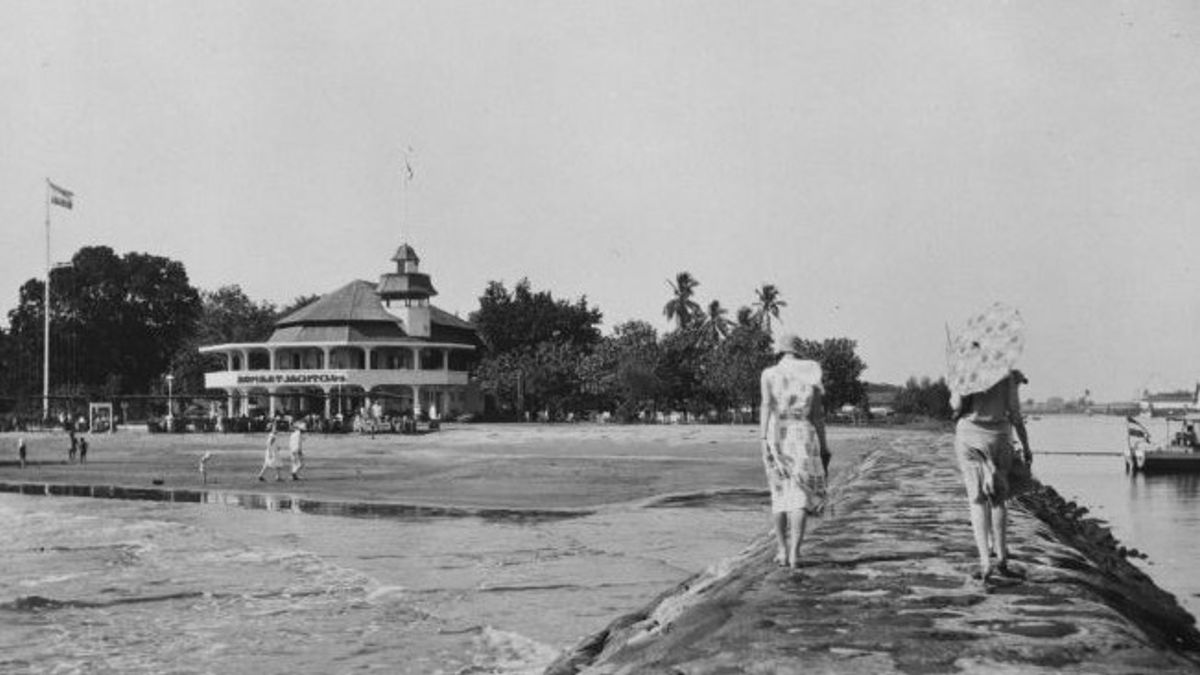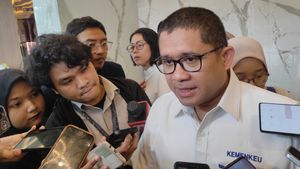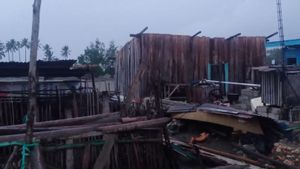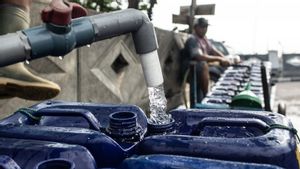JAKARTA - If every building has a story, then it is not wrong if every area or village also has a story. One of them is the Cilincing area, whose name comes from a combination of two words Ci and Calincing.
The word Ci comes from the Sundanese language which means tributary, and it happens that the river flows from south to north. Meanwhile, Calincing is taken from a tree like Blimbing Wuluh, Averrhoa Carambola: it belongs to the Oxaldeae family, which happens to grow a lot around the area.
So that the pronunciation of Ci Calincing, over time changes to Cilincing. Or an area that has now become one of the important sub-districts in North Jakarta Municipality.
However, if investigated, it turns out that Cilincing has been known for a long time and has become legendary in the history of North Jakarta. Because apart from being to the east of Tanjung Priok Port, Cilincing was already more well known since the colonial era.
This was recorded in a book entitled The Origin of Place Names in Jakarta by Rachmat Ruchiat. He said there were at least two markers that made Cilincing an important area in the colonial era.
First, Landhuis - a resting house - Cilincing which was built by Justinus Vinck in 1740 and can still be seen today, although things are not too good, which is currently occupied by several retired police officers and is known as the 'Veteran house'.
Second, Landhuis Vredestain, which was built by the former governor of the North Coast of Java, Nicholas Hartings, in 1750. Even though the second landhuis is now no trace.
In addition, many historical events have occurred in Cilincing. Including on August 4, 1811, when the British troops began to dock to the coast of Cilincing, in order to take over the Dutch rule - which was under Napoleon's control.
Tim Hannigan describes the event in his book Raffles and the Invasion of Java. He said, "It took nearly 24 hours to complete the landing of 12 thousand people from the ship in Cilincing. The British army consisted of almost the same size of European and Indian regiments. "
And four days later, under the hot sun and less fresh air typical of Batavia, the Dutch Napoleonic army, seeing the British troops then panicked and ran towards the hills.
"It has been four days since John Leyden tiptoed on the shore of Cilincing, but the British still saw little of the Dutch Napoleonic army, just a glimpse of panicked scouts, dashing toward the hills," added Tim Hannigan.
Due to this incident, the British began to smell the aroma of victory and afterwards sovereign Thomas Stamford Raffles, an Englishman, became the Governor General of the Dutch East Indies who ruled from 1811 to 1815.
At that time, it was clear that Cilincing had changed a lot. The face that used to be, is not necessarily still being tasted by the present. How is Cilincing now? Here's the search.
Cilincing Now
Long after the incident when the British closed their ships, it was clear that Cilincing had changed a lot. In the past, there were many starfruit trees, now it is clear that they are no longer visible. Moreover, hoping for the shade of the trees.
So that the assumption of the scorching heat that has always been Cilincing's image is still attached, while side by side with a new image such as the chaotic and dirty Cilincing which has become a daily sight - in a place that was once the Pantai Indah area.
The effect is, when there are people or audiences who want to explore the history of Jakarta, especially Cilincing, most of them prefer to spend their time visiting Kota Tua which is famous for its Jakarta History Museum, Wayang Museum, Fatahillah Park, and Maritime Museum, or visiting the trade center of the past. : Sunda Kelapa.
Even so, for those who visit Clincing, still bring interesting experiences, especially a visit to the fishing village.
It is interesting because you can see firsthand the simplicity of Cilincing residents. It is interesting because you can see the residents doing the drying process of the salted fish directly, and it is interesting because you can see the residents harvesting shells directly.

A group of Indo-European people by car on the way from Tanjung Priok to Cilincing (ikimediacommon)
The beauty of diversity in Cilincing
Apart from visiting fishing villages, this is where people can see real examples of the beauty of tolerance and diversity. All of this is evidenced by the fact that almost every house of worship of the various beliefs is close together. Some of them are:
Vihara Lalitavistara, a Buddhist house of worship in the form of a temple which is said to be one of the oldest temples in Jakarta. In this monastery complex is also equipped with an ash house, hundreds of statues and places of prayer of course.
Pura Segara, a Hindu house of worship in the form of a temple which is allegedly the only temple in the Jabodetabek area which is on the beach. Why is it near the beach? Because in Hindu belief, water sources such as lakes or the sea are always symbolized as a source of life.
Masjid Al Alam Cilincing, a house of worship for Muslims in the form of a mosque which is included in one of the historical mosques in Jakarta. Unfortunately, the building has been expanded with several new buildings in the form of a pavilion, leaving the original mosque building in the middle.

The Javanese Christian Church, a house of worship for Christians in the form of a church that is quite unique and of course historical.
Interestingly, some of them are hundreds of years old and have become Jakarta's cultural heritage buildings. Therefore, through that place, those who come will at least understand the important value of various places of worship, be it to know their historical value, knowledge, education, religion, and culture.
One person who feels the benefits of Cilincing's diversity is Ira Latief - the founder of Jakarta Creative Tourism. Thanks to that, he and his community also feel they have a moral responsibility as residents of North Jakarta, to introduce the existing diversity. Therefore, a program called Diversity Tourism was sparked.
Contacted by the VOI team by telephone, Ira revealed that the goal of diversity tourism is to fully generate tolerance.
He said, "Diversity tourism is held with the aim of arousing interfaith tolerance and insight into diversity in a fun and relaxed way, namely by traveling to different places of worship."
"The response of the participants who took part was really positive. They learn about the beauty of diversity from diversity tourism and indirectly they can learn to deepen a sense of tolerance among religious people, "Ira concluded.
Sure enough, this type of tourism is really interesting, because it is relatively new and very rare. For that, although currently Cilincing tourism is not as busy as the old city. It is hoped that Cilincing can be returned to its former glory, namely:
"To be an important gateway in entering the archipelago. So that when they enter it, people will see that it is from this diversity that the strength is present. "
We looked up
To nature and escape
where pluralism can live
and anti-pluralism finds no space
where marriage of opinion is not treason
where disagreement is not distraction
where the renewal of attitude is not ugly.
(A piece from Ahmad Wahib)
The English, Chinese, Japanese, Arabic, and French versions are automatically generated by the AI. So there may still be inaccuracies in translating, please always see Indonesian as our main language. (system supported by DigitalSiber.id)









